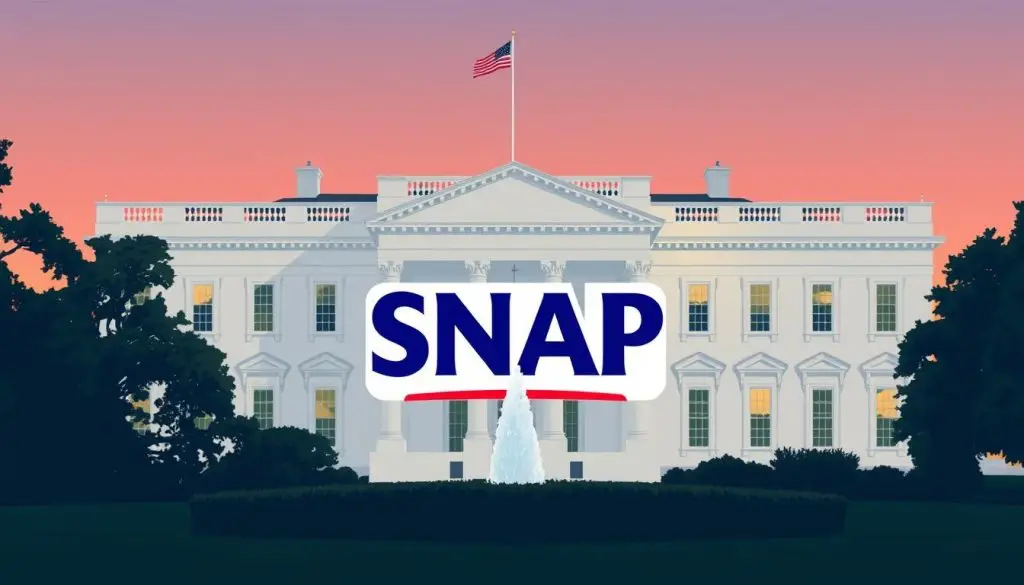SNAP Benefits Confirmed to Be Dispensed Despite Ongoing Government Shutdown
Amidst a government shutdown, the White House ensures SNAP benefits confirmed for recipients. Stay informed on your SNAP status and updates.

Click to summarize this article.
Snap Benefits Confirmed: The White House has confirmed that Americans will get their Supplemental Nutrition Assistance Program (SNAP) aid. Press secretary Karoline Leavitt said she spoke with President Donald Trump. They agreed to move funds, but warned of possible delays.
Earlier, President Trump stated that payments would be withheld until the shutdown ended. This confused. Later, officials clarified that the government would partially fund November benefits. This news is a snap benefits verification and sets expectations for varying amounts and timing.
Across the country, advocates are pushing for food aid to continue during times of crisis. In Tennessee, faith leaders are highlighting the importance of SNAP for families. See their call for protection in the statewide appeal by bishops. With Snap Benefits confirmed at the federal level, the focus now is on how quickly states can process and distribute funds.
Snap Benefits Confirmed Key Takeaways
- White House says it will comply with a court order to issue SNAP during the shutdown.
- Karoline Leavitt confirmed partial November funding, with delays possible.
- A morning post by President Donald Trump conflicted with later guidance.
- Missed Saturday payments affected more than 40 million recipients.
- States will handle distribution, amounts, and timing under partial funding.
- Advocates emphasize the importance of continuity, with Snap Benefits Confirmed providing verification and status updates for Snap Benefits.
White House statement, court orders, and what changes for SNAP during the shutdown
The White House stated that aid will continue to flow during the shutdown. They warned that how quickly it reaches people depends on state systems. If you have questions, call your state hotline or the number on your EBT card.
Press secretary clarification versus earlier presidential comments
Press secretary Karoline Leavitt stated that the administration will comply with court orders. She said they will start sending out partial benefits. This is different from what the president said earlier, which was confusing.
Leavitt explained that it takes time to make these changes. It also depends on how fast states can process the information.
Court rulings compelling the USDA to deploy contingency funds
Two court decisions last week told the USDA to use emergency funds for November aid. Judges stated that these funds cannot be used solely for disaster relief. They must be used during the shutdown.
For more information, check out a federal funding update.
Partial funding decision and compliance details
The administration said they will pay about half of what’s owed. They estimate they have $4.65 billion to help. They decided not to take money from other food programs to avoid more problems.
States will review each case to ensure it meets the eligibility criteria. If you have questions, please call the customer service number on the back of your EBT card.
Why did the November benefits not go out as scheduled
November payments were delayed because of the shutdown. It stopped new money from going to states. This caused backlogs and missed deadlines for over 40 million people.
States tried to help by supporting food banks. However, it wasn’t until court orders and the White House’s response that aid began to flow again.
Snap Benefits Confirmed
Families can expect to receive some of their SNAP benefits during the shutdown. The USDA estimates that approximately $4.65 billion will be available. This is enough for half a month for those who qualify.
States are responsible for distributing the money. So, how much and when it arrives can differ a lot. It may take some time for systems to adjust to the new rules.
People should check their online SNAP benefits account regularly. They can look for updates and notices there. For more information on how states are handling things, see this update on the November shutdown.
To stay informed, recipients can check their EBT balances every day. They can also set up alerts. To learn about your benefits, log in to the portal and view the next payment date.
Key point: Until more funding or legal solutions are available, agencies will make partial payments. They will send updates through state websites, phone calls, and texts. Keeping an eye on Snap Benefits means watching for official messages and checking your online account for the next deposit.
How much and when: timelines, amounts, and what varies by state
Households are eager for precise dates and numbers. They need them quickly. During the shutdown, people are looking for a SNAP benefits status update. They also need to navigate the SNAP benefits application process and verification. Snap benefits are funded by the USDA budget, not the welfare system.
The basics are the same, but timing and amounts vary by state. This is based on federal guidance and available funding.
USDA’s contingency fund estimate and partial allotments
USDA estimates $4.65 billion in contingency funding can cover half of the current monthly allotments nationwide. This means many households may see partial deposits. These will be about 50% of their usual benefit, pending federal parameters.
The agency avoided drawing down school meal funds to limit wider food security risks. People should check their state portal for a SNAP benefits status update. This is before planning the month’s food budget.
State distribution logistics and possible delays
States will run payment files on different calendars. Some can push reduced amounts with their next cycle. Others face system changes and staffing gaps that stretch timelines by weeks, even months.
These differences could shape when EBT cards load and how updates are messaged. To avoid missed deposits, recipients should confirm their case details. Snap benefits verification can pause an account. If documents were requested, follow up to keep the case moving under the snap benefits eligibility criteria.
How payments may be calculated for households
States will apply the standard SNAP math. This includes income, household size, and allowable deductions. Then, they will scale payments to match the federal coverage target.
In most places, this means a proportional share of the regular amount, rather than a fixed dollar figure. Those who recently applied should note that the SNAP benefits application process and case approval control when funds start. After approval, watch for a snap benefits status update to see the initial partial amount and the next issuance date.
Typical monthly benefits and regional differences
Context matters for partial funding. Last year, the average person received about $187 per month. A typical U.S. household with a child received around $574. With only partial coverage, the immediate purchasing power drops.
Geography also plays a role. Hawaii’s average monthly benefit led the nation at about $377, while Minnesota’s average ran about $220 lower. Such gaps mean a uniform percentage cut will hit regions differently. Review your state’s guidance for amounts, timing, and any required SNAP benefits verification tied to the SNAP benefits eligibility criteria and the SNAP benefits application process.
| Factor | What It Means Now | Why It Varies | What to Check |
|---|---|---|---|
| Contingency Funding | About 50% of the monthly allotments are projected | Federal cap on available dollars | Latest snap benefits status update from your state |
| State Timelines | Issuance dates may shift or stagger | System capacity and policy steps | EBT portal messages and call center notices |
| Household Calculation | Standard formula, then proportional cut | Income, size, deductions, and federal targets | Case details and any snap benefits verification requests |
| Regional Averages | Higher or lower baseline benefits | Cost of living and historic allotments | State guidance on partial amounts and schedule |
Bottom line for families: keep documents ready, monitor your case for a snap benefits status update, and follow your state’s notices. This is on the SNAP benefits application process, SNAP benefits verification, and the SNAP benefits eligibility criteria. To avoid delays in partial payments.
Snap Benefits Confirmed Conclusion
SNAP will continue during the shutdown, but it’s a tight situation. Courts have pushed the issue, and the White House has agreed to comply. The USDA has approximately $4.65 billion set aside so that most households will receive half of their usual allocation.
At first, there was confusion from the president. But then, press secretary Karoline Leavitt made it clear: benefits will be paid out. Yet, delays are expected as states adjust their systems.
States and nonprofits fought for partial payments, and more lawsuits might push for full payments. For more information, see the report on court-ordered SNAP funding. It also discusses the duration of the shutdown.
Until funding is restored, states will handle things differently. Families should check their online account for updates. If the balance doesn’t match, call the customer service number for help.
The main point is clear and urgent. Benefits are confirmed, but they’re not complete. Expect staggered payments, reduced amounts, and last-minute changes. Keep an eye on your online account and the customer service number for updates.









